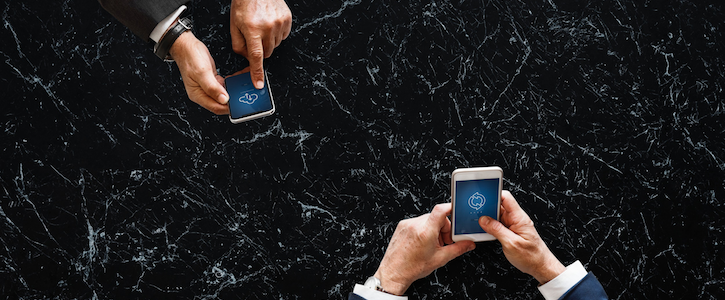IoT, Distributed Ledger Can Speed Up Health Data Sharing
A new study suggests the model can benefit rehabilitation, fitness and labor health protections.

Both distributed-ledger technologies (DLT) and the Internet of Things (IoT) would contribute greatly to health-related data sharing, according to a new report.
Investigators from Spain, Denmark and Norway successfully demonstrated how health-related data could be collected and published to an online network with different encryption and privacy options. This system could be the model upon which to build when creating secure and efficient health data sharing marketplaces without fees to handle the amount of data generated by IoT devices.
“To overcome these barriers that hinder the full use of valuable health data,” the study authors wrote, mentioning expenses and security as two obstacles, “it is necessary to develop advanced systems to accelerate secure, fee-less, tamper-resist and high-scalable health data sharing.”
The Tangle & Health Data Sharing
Researchers aimed to develop a health-related data sharing system that would integrate IoT and DLT. They also hoped to build a prototype to test the feasibility of their creation. IoT data came from both wearable devices (such as smartphones, smartwatches and more) and stationary air quality sensors (to collect data about temperature, humidity, air quality and noise), the investigators said.
In the study, participating patients could publish their health data and a doctor could publish their evaluation result to a networked called the Tangle. Patients subscribed to doctors’ channels to receive the result. However, wearable smart devices could not publish or receive data directly to and from the Tangle. Investigators designed the prototype so that a gateway layer would be necessary.
Subscribers could access the Tangle data when published to the public mode. But they needed an additional decryption key to access data published to the restricted mode. Environmental data were published publicly, while patient report data and tremor evaluations were published in the restricted mode.
Three types of data were tested: tremor level, based on smart watch acceleration; patient reports from a smartphone; and environmental data from air sensors.
Quicker, More Secure Health Data Exchange
In 100 trials, investigators found no obvious differences in waiting time to publish to Tangle, despite differences in each data type’s message length and encryption level (public or restricted). The time varied from a few seconds to more than one minute, in some cases.
“Currently, the bottleneck of the data publishing speed is the total number of nodes connected to the Tangle network and the condition of the specific node used by the publishing device,” the study authors wrote. “It is expected that the time to publish data from a local server or from the single board computer should be similar.”
While there is still room for improvement, the investigators continued, they hypothesize that the more nodes there are to connect to the Tangle network, the faster a transaction can be approved.
The Implications of Better Health Data Sharing
“Our research work has shown it is possible to develop a secure health-related data sharing system by converging the emerging DLT and IoT technologies,” study author Raghava Rao Mukkamala, Ph.D., of the Copenhagen Business School, told Inside Digital Health™. “It makes possible a reliable marketplace for the individuals to share their health-related data with hospitals, researchers, industry companies or any other organizations in a secure and controllable way. In return, individuals can benefit from their own data in monetary, medical services or other forms.
“On the other hand, researchers and companies will be able to gather relevant data for their studies, clinical trials or product development,” Mukkamala continued. “Therefore, there will be plenty of opportunities for secure health-related data sharing using emerging technologies like DLT and blockchain technologies, which can lead to lead optimized healthcare processes with enhanced efficiencies.”
The paper, titled “Accelerating Health Data Sharing: A Solution Based on the Internet of Things and Distributed Ledger Technologies,” was published in the Journal of Medical Internet Research.
Get the best insights in digital health directly to your inbox.
Related
Will Healthcare See Ethical Patient Data Exchange?
As HHS Strives to Improve Data Sharing, It Must Overcome 5 Obstacles
eHealth Exchange and InterSystems Partner to Reduce Data Sharing Expense